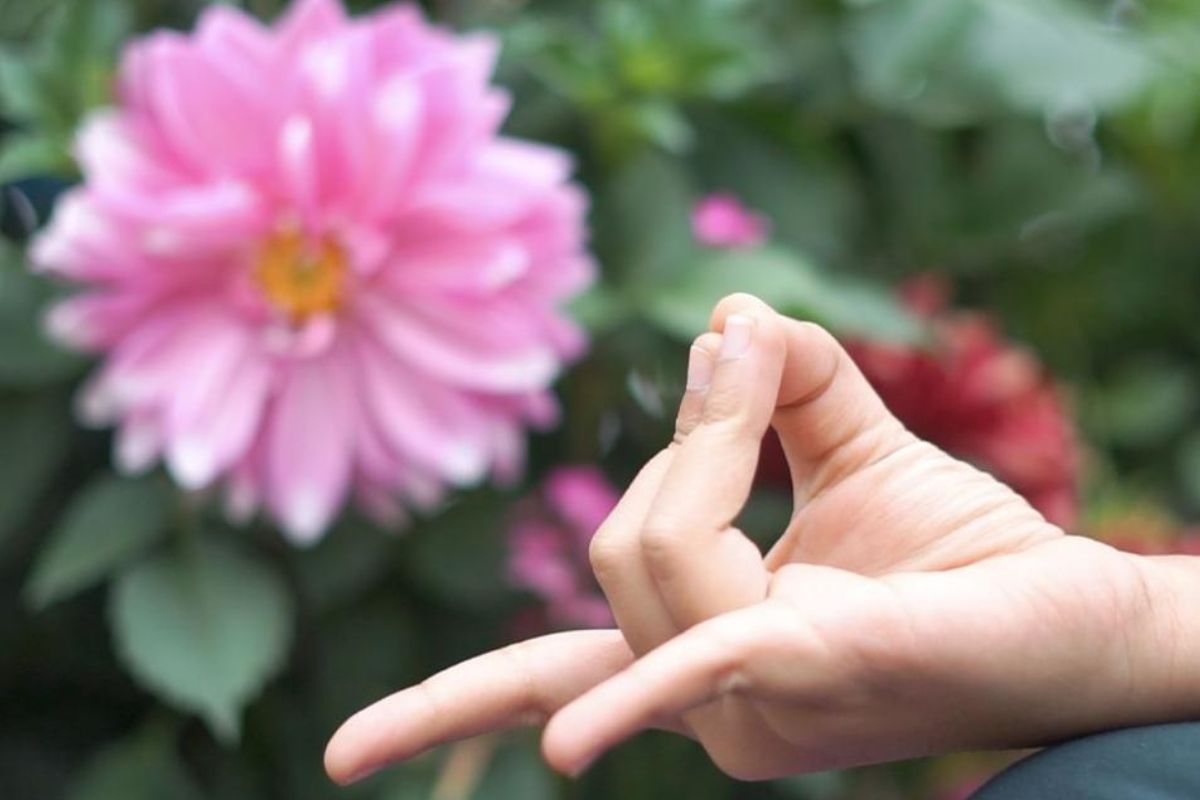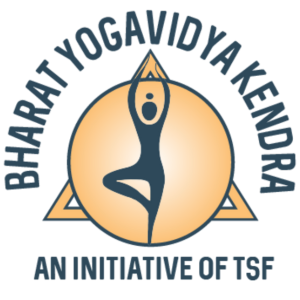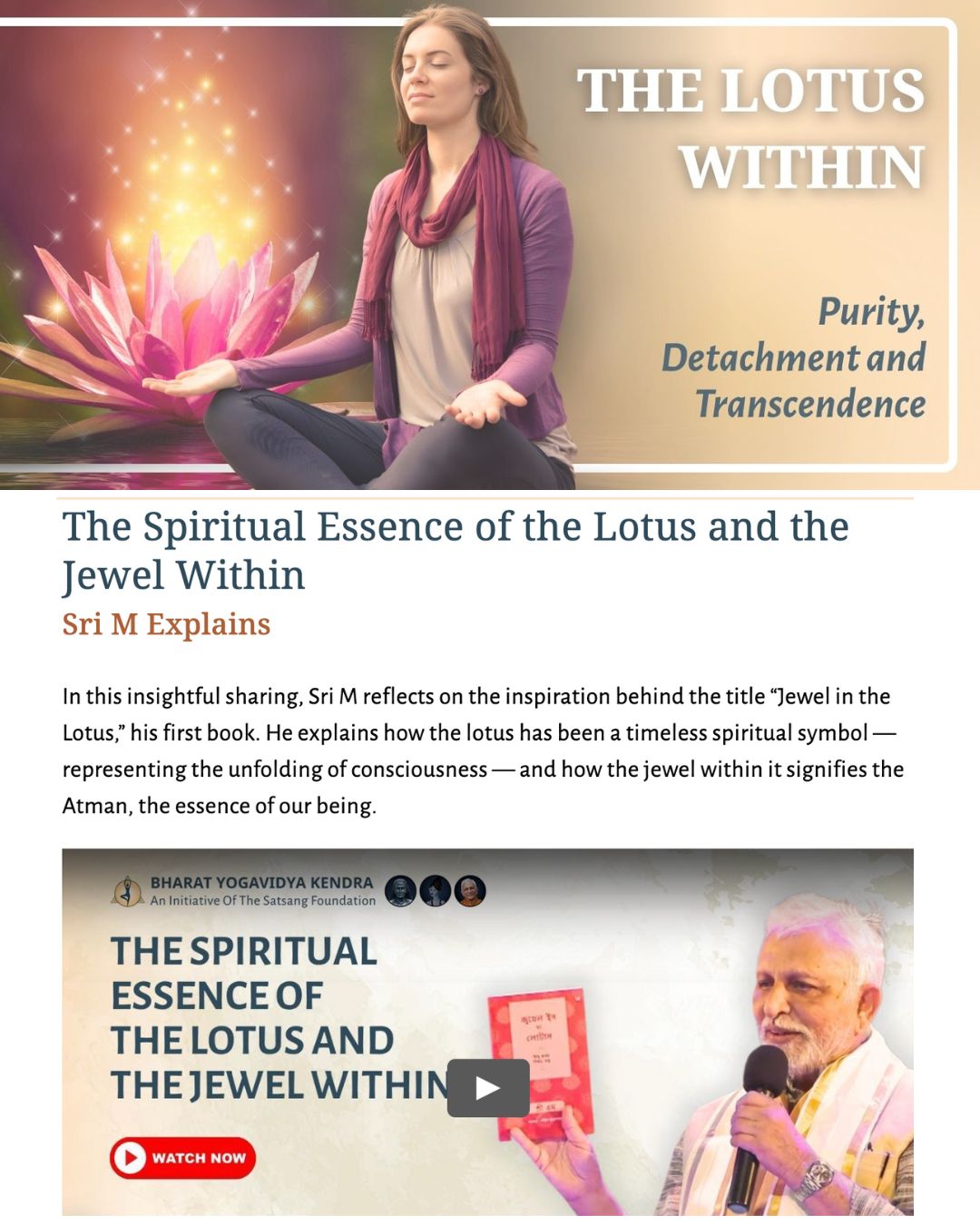Yoga and Ayurveda:
An Ancient Synergy for Modern Well-Being
Dear Readers,
As we explore the theme for this month, “Yoga and Ayurveda – An Ancient Synergy for Modern Well-Being,” it’s essential to understand that these two ancient sciences aren’t just practices; they’re ways of life.
Yoga and Ayurveda have been intertwined for centuries, each supporting the other to create a balanced, healthy, and spiritually enriched life.
Ayurveda, the science of life and longevity, offers us a roadmap to maintain health through a deep understanding of our body’s constitution and how it interacts with the world around us.
It teaches us how to eat, how to live, and how to harmonize our body, mind, and spirit with the rhythms of nature. On the other hand, Yoga provides the tools to calm the mind, strengthen the body, and deepen our connection with our true self.
Together, Yoga and Ayurveda form a complete system of wellness. Ayurveda helps us understand our unique nature and how to care for it, while Yoga gives us the practices to keep our mind and body in harmony. Whether it’s through asanas tailored to your dosha or dietary guidelines that keep you balanced, these practices are designed to work together to bring out the best in you.
In this edition of Yogavidya, we’ll explore how you can integrate these two powerful practices into your daily life. From practical tips to deeper insights, our goal is to help you find your balance in today’s fast-paced world.
We hope this issue inspires you to explore the synergy of Yoga and Ayurveda, and how they can help you lead a healthier, more mindful life.
With regards,
The Yogavidya Team
Yoga and ayurveda – a way of life
Sri M Explains
Discover the deep connection between Yoga and Ayurveda with Sri M. He shares how these ancient sciences work together to balance body, mind, and spirit for holistic health. Learn about the Ayurvedic view of health, dosha balancing, and their integration with Yoga. Watch the video to hear his wisdom!
Talk with M
BLOG POST
Yoga & Ayurveda – Holistic Wellness
“Ayurveda does not look upon asanas as fixed forms that by themselves either decrease or increase the doshas. It views them as vehicles for energy that can be used to help balance the doshas, if used correctly.”
– David Frawley, Yoga For Your Type: An Ayurvedic Approach to Your Asana Practice
Unlike modern medicine these practises go to the root to eliminate the cause of pain and suffering. They help activate the natural healing forces in our body. They are time consuming and require patience and effort. It is difficult to find authentic places that follow the practise of the ancient texts. But the few rare places that offer value find seekers from all over the globe.
“The natural healing force within each one of us is the greatest force in getting well.” – Hippocrates
Read the full article here:
BOOK REVIEW
The Fakir: The Journey Within
Ruzbeh N.Bharucha

An unexpected find which took me by surprise. I was browsing through the vast library at the Chowdepalli center when I happened to see this book. The name ‘The Fakir’ drew me towards the book & I picked it up to read, curious to explore the jewels within.
From the moment I started reading, it was a roller coaster ride of emotions and it did not stop till I completed reading the entire book! It is a story of the lead character who is a devotee of Shirdi Sai Baba. The author presents the concepts of eternal laws of nature, different layers of relationship between Guru & Disciple, life lessons to learn and many more through the story of this lead character. The subtle ways in which the author unfolds the messages throughout the book keeps the reader captivated. The author has also added enough humor, plot twists to ensure the reader finds it interesting and not very esoteric or dry.
The biggest takeaway personally is that it addressed many a questions, doubts I have had about the spiritual path, challenges we face on the way. It is true when the Masters say that the unseen hand of the Divine is always there guiding and pointing us to what is needed at any given situation to continue on with our journey. Getting to read this book has been definitely one such blessing.
(Book in review – The Fakir – the Journey Continues : Ruzbeh N.Bharucha)
YOGA GUIDE
Aakash Mudra
Hasta Mudras or hand gestures balance, promote, or redirect the flow of prana and subtle energy to influence the sense-perception, sense of being, and state of wellness. Everything in the universe is a permutation or combination of the five elements. Fueled by sound (vibration), they partake in the infinite cycle of creation and destruction.
Aakash Mudra is sometimes also called as Shuni Mudra. In Sanskrit, ‘aakash refers to ‘ethereal space’ or ‘open mindedness’. This practice allows us to unite the individual Consciousness with the Universal Consciousness known as Atma or the individual self feeling connected with the higher self ( Parmatma).
Benefits:
- Energy flow is regulated and controlled
- Activates the Vishuddhi Chakra
- Increases the air element
- Helps to develop intuition
Did You Know?
Women & Lunar Rhythms

In Ayurveda, the timing and intensity of your Yoga practice can significantly impact its effectiveness based on your dosha type:
Vata: Early morning (6-10 AM) is ideal for Vata types, focusing on grounding and calming poses. In the evening, a gentle practice between 6-8 PM helps unwind and relax the nervous system. Vata types should avoid overexertion, practicing for about 30-45 minutes with moderate intensity.
Pitta: Midday (10 AM-2 PM) is best for Pitta types, with a focus on cooling and balancing poses. In the evening, a calming practice between 7-9 PM is ideal to release the day’s heat and stress. Pitta types can handle 45-60 minutes of practice but should avoid overly intense or competitive workouts.
Kapha: Late afternoon (2-6 PM) is perfect for Kapha types, with energizing and stimulating poses. In the evening, an active practice between 6-8 PM can help keep Kapha balanced and energized. Kapha types benefit from 60 minutes of more vigorous practice to counteract their naturally slower energy.
Mudra Guide

Apana mudra helps improve digestion and detoxify the body. It is one of the most important mudras or hand gestures for good digestion and metabolism. As per Ayurveda, Apana mudra improves functioning of the organs connected with excretion and elimination helping to balance the three doshas in the human body.
Practice Steps:
- Sit in a comfortable position with your back straight. You can sit cross-legged on the floor, on a cushion, or in a chair with your feet flat on the ground.
- Rest your hands on your thighs or knees, with your palms facing upward.
- Touch the tips of your middle and ring fingers to the tip of your thumb, while keeping the index and little fingers extended and straight. The fingers should form a circular shape with the thumb, middle, and ring fingers.
- Close your eyes if you’re comfortable doing so. Take deep, slow breaths. Focus on the sensation of the mudra and the rhythm of your breath.
- Hold this position for a few minutes. Start with 5 minutes and gradually increase the time as you become more comfortable.
- To release the mudra, gently uncurl your fingers and return to a relaxed hand position.
Benefits:
- Helps with digestive issues
- Supports the body’s detoxification processes by helping to eliminate toxins and waste products.
- Balances and enhances the flow of energy (prana) in the body, particularly in the lower abdomen, which is associated with the root and sacral chakras.
- Relieves Constipation
Contraindications/ Precautions:
- Avoid practising right after meals, give 2-3hrs gap minimum.
- Apana mudra generates strong downward pulling force, avoid if you already have diarrhoea or dysentry.
YOGA RESOURCE
Come Back to Alignment
Bad posture can disrupt the natural balance and alignment of the body, leading to discomfort and health issues.
Ayurveda emphasizes the importance of maintaining proper posture to ensure the smooth flow of energy throughout the body.
In this video, we share 5 simple Yoga practices designed to correct bad posture and restore alignment. These practices not only improve your physical well-being but also support overall balance and harmony in your daily life.
AYURVEDA WISDOM
Varsha Ritu
Varsha Ritu, the monsoon season, lasts from mid-July to mid-September, bringing cloudy skies and regular rainfall. This season sees the aggravation of Vata dosha and the accumulation of Pitta dosha, while Agni (digestive fire) becomes weakened. Ayurvedic Guidelines for Varsha Ritu:
- Diet: Favor foods with Amla (sour) and Lavana (salty) tastes. Eat old grains like barley, rice, and wheat, along with light soups (Yusha). Drink boiled and cooled water, and avoid heavy, difficult-to-digest foods like red meat and alcohol.
- Lifestyle: Bathe with boiled water and regularly massage your body with oil to balance Vata. Medicated Basti (enema) is recommended to cleanse the doshas. Avoid heavy exercise, drenching in rain, and excessive physical or mental strain.
Following these practices during Varsha Ritu helps maintain health and balance amidst the challenges of the monsoon season.
SPOTLIGHT OF THE MONTH
BYK 2025 – Celebrating 5 Years of Yoga & Growth
As we mark our 5th birthday, Bharat Yogavidya Kendra (BYK) is grateful to announce an inspiring lineup of offerings for 2025. Rooted in tradition yet attuned to modern life, we bring you tools to deepen your yoga practice and personal growth.
- Nitya Anushtanā: Join live, interactive yoga classes every month via Zoom, led by our expert teachers in IST timings – your regular dose of authentic practice.
- Ritu Sādhanā: Align with nature’s rhythm through seasonal practices, carefully curated and taught live to harmonize body and mind with the changing seasons.
- Svādhyāya Pātha: Learn anytime, anywhere with pre-recorded yoga courses designed for self-paced learning – perfect for busy schedules.
- Adhyāpaka Praveśa: Step into the role of a teacher with our comprehensive, certified yoga teacher training programs, accredited by AYUSH, IYA, and YA.
- Viśesha Sangraha: Discover enriching yoga experiences to expand your practice, build connections, and foster deeper personal growth.
- Āśrama Anubhava: Immerse yourself in transformative, in-person yoga retreats at our serene Madanapalle ashram, open to all ages and skill levels.
This year, as you craft your new year resolutions and sankalpa, BYK stands with you every step of the way. Stay tuned for detailed course offerings under each category. Together, let’s embrace Yoga for Now, for life, and for a brighter you in 2025.
Upcoming Courses & Retreats
VISHNU SAHASRANAMAM
Mantra Chanting Class
Dates: 1st Jan – 28th Feb
Days: Wed & Fri
Total: 18 sessions
Time: 7:00 – 8:00 PM IST
Fee: INR 5,000 | US$ 89
Mode: Online Via Zoom
Vishnu Sahasranamam is a revered hymn that lists the 1,000 names of Lord Vishnu, who is considered the preserver of the universe. The hymn appears in the Mahabharata as it was recited by Bhishma to Yudhishthira while Bhishma lay on the bed of arrows, imparting wisdom.
Learn to chant with the correct Sanskrit pronounciation & metre.
PRANAYAMA AND MEDITATION
Regular Course
- Dates: 7th – 30th Jan
- Days: Every Tue & Thurs
- Total: 8 session
- Time: 6:30 – 7:30 AM IST
- Fee: INR 1,000 | US$ 32
- Mode: Online Via Zoom
Upon popular request, we are introducing a regular pranayama and meditation course to help you build a consistent practice while also introducing you to the science of Pranayama, and practices that balance mind, body, and breath. One hour twice a week is all it take to a healthier, happier you!
Join to master the art of prana vidya & deep meditation.

Thank you for reading





